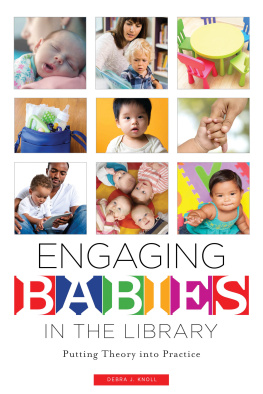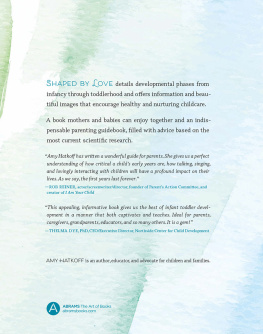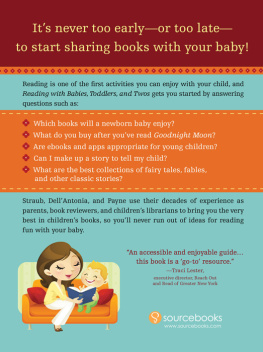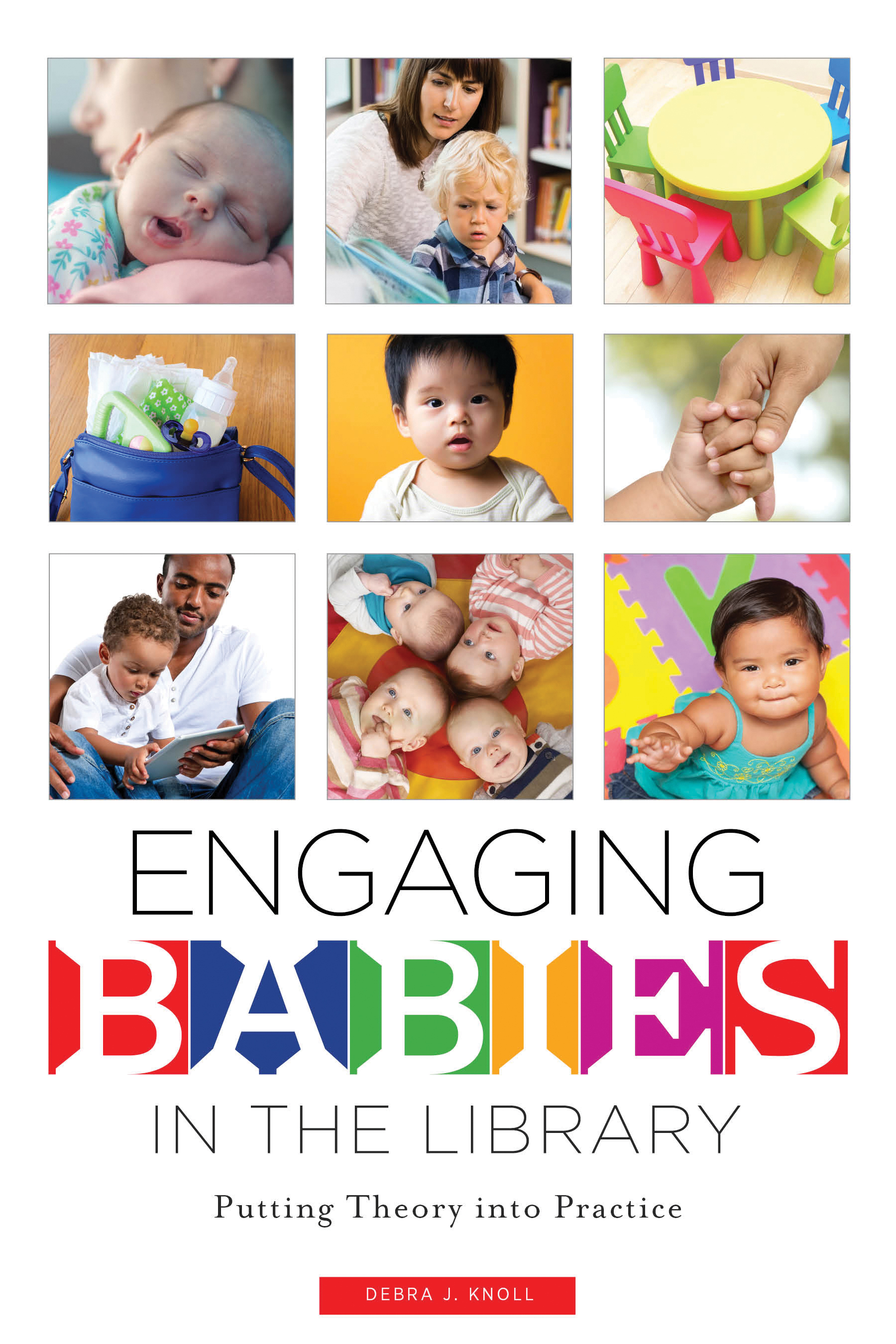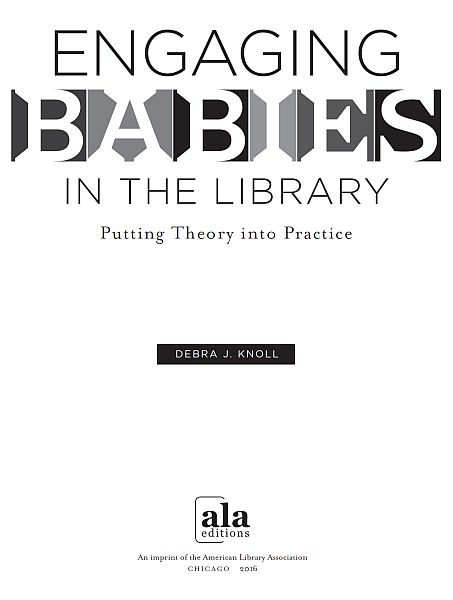Debra J. Knoll - Engaging Babies in the Library: Putting Theory into Practice
Here you can read online Debra J. Knoll - Engaging Babies in the Library: Putting Theory into Practice full text of the book (entire story) in english for free. Download pdf and epub, get meaning, cover and reviews about this ebook. year: 2016, publisher: American Library Association, genre: Children. Description of the work, (preface) as well as reviews are available. Best literature library LitArk.com created for fans of good reading and offers a wide selection of genres:
Romance novel
Science fiction
Adventure
Detective
Science
History
Home and family
Prose
Art
Politics
Computer
Non-fiction
Religion
Business
Children
Humor
Choose a favorite category and find really read worthwhile books. Enjoy immersion in the world of imagination, feel the emotions of the characters or learn something new for yourself, make an fascinating discovery.
- Book:Engaging Babies in the Library: Putting Theory into Practice
- Author:
- Publisher:American Library Association
- Genre:
- Year:2016
- Rating:3 / 5
- Favourites:Add to favourites
- Your mark:
Engaging Babies in the Library: Putting Theory into Practice: summary, description and annotation
We offer to read an annotation, description, summary or preface (depends on what the author of the book "Engaging Babies in the Library: Putting Theory into Practice" wrote himself). If you haven't found the necessary information about the book — write in the comments, we will try to find it.
Public libraries across the nation continue to transform themselves into learning centers for infants, toddlers, and preschoolers. There are many resources available to help librarians create baby-friendly play spaces and enhanced storytimes, but until now there has been gap in the literature addressing the developmental needs and changing behaviors of babies and toddlers. Parents and caregivers can also present unique service challenges. Focusing squarely on the how of providing quality library service to babies and families, Knolls new book provides sensible, sensitive advice on meeting their physical, emotional, intellectual, and social needs. Geared towards helping public libraries foster healthy growth and development for their littlest patrons, this book: explores multiple aspects in the developing life of a baby, discussing physical needs, emotional expressions, intellectual pursuits, and social development; highlights real-life examples from public libraries that relate to how these developmental processes present themselves while babies and families interact in the library; presents Baby Steps for each topical area, providing service tips and suggestions that can be easily or inexpensively put into practice; offers Big Steps, conversational points that invite librarians to think creatively about further investment, support, funding, and collaborative efforts; and includes carefully selected research findings and other information that can be used for planning, policymaking, and advocacy. With Knolls guidance, childrens librarians will be informed and inspired to rise to the challenge of providing quality service to babies, toddlers, and care providers.
Debra J. Knoll: author's other books
Who wrote Engaging Babies in the Library: Putting Theory into Practice? Find out the surname, the name of the author of the book and a list of all author's works by series.

